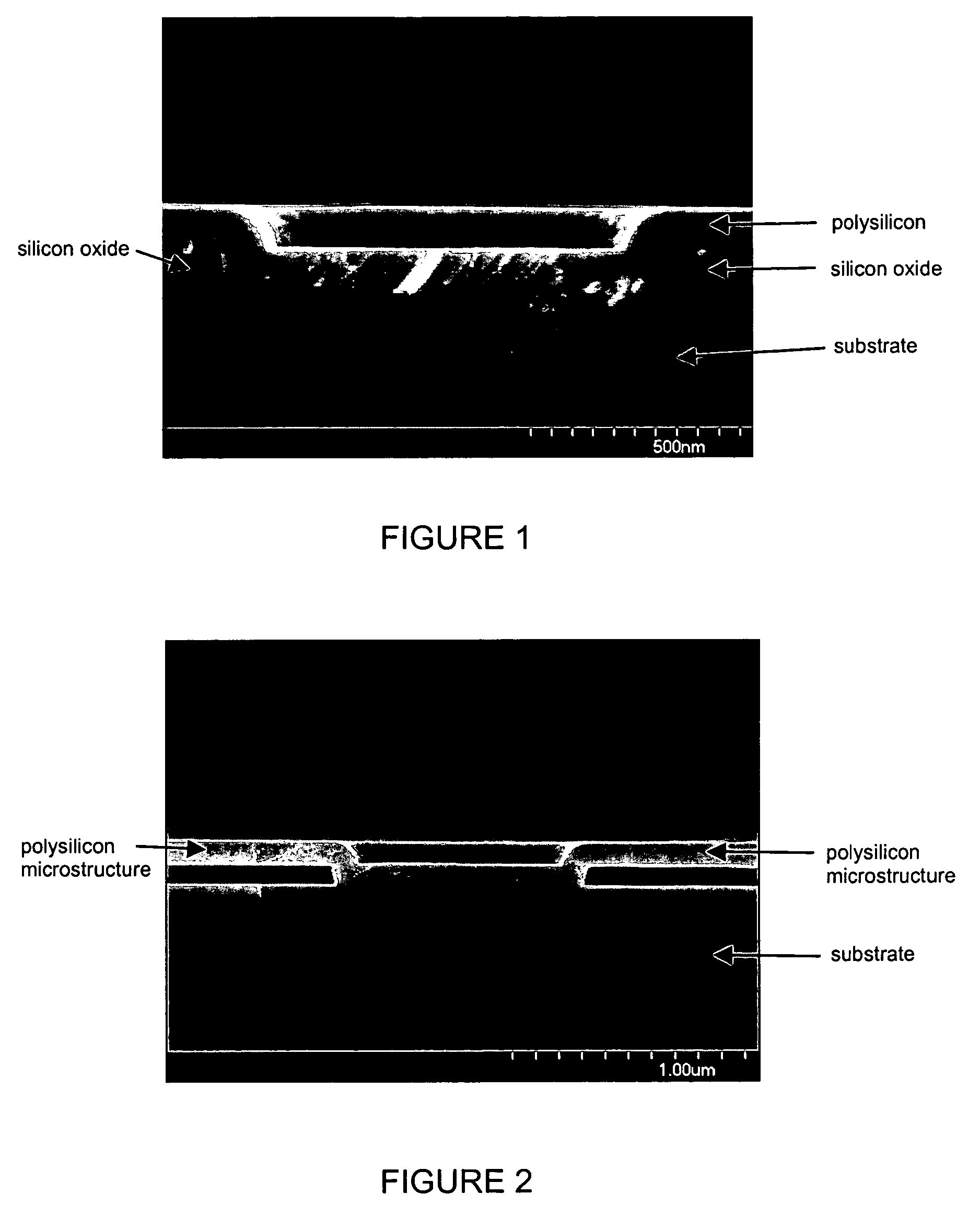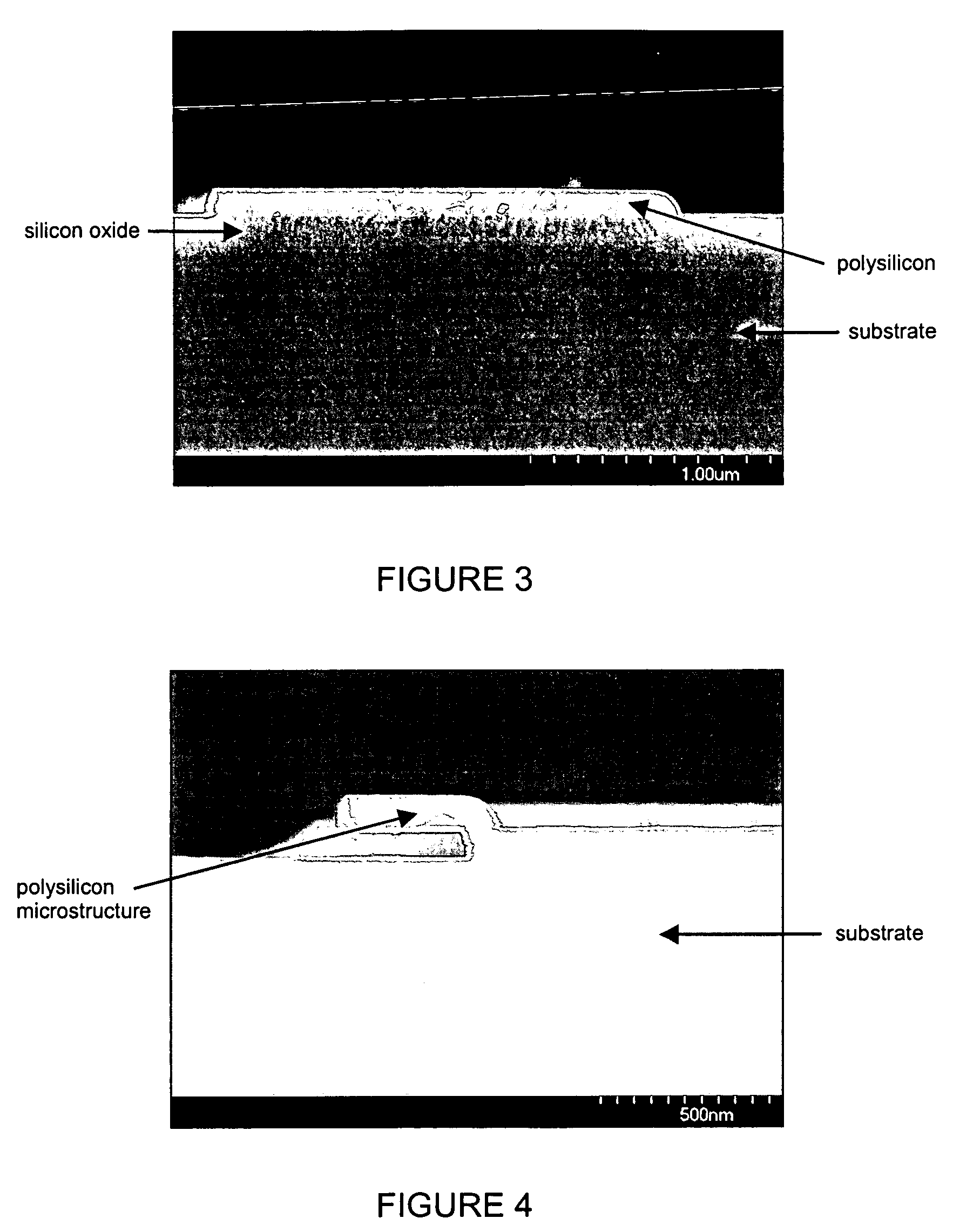Removal of MEMS sacrificial layers using supercritical fluid/chemical formulations
a technology of supercritical fluid and mems sacrificial layer, which is applied in the direction of detergent compositions, chemistry apparatus and processes, microstructural devices, etc., can solve the problems of removing the advantages of using a water-free etchant, contaminant species are not adequately solubilized therein, and may cause stiction
- Summary
- Abstract
- Description
- Claims
- Application Information
AI Technical Summary
Benefits of technology
Problems solved by technology
Method used
Image
Examples
Embodiment Construction
[0018]The present invention is based on the discovery of supercritical fluid (SCF)-based etching compositions that are highly efficacious for the etching of sacrificial silicon-containing layers from semiconductor substrates. The compositions and methods of the invention are effective for etching sacrificial layers including, but not limited to, silicon, silicon oxide and silicon nitride (Si3N4) layers, and related post-ash and post-etch residue removal from patterned wafers.
[0019]Because of its readily manufactured character and its lack of toxicity and negligible environmental effects, supercritical carbon dioxide (SCCO2) is a preferred SCF in the broad practice of the present invention, although the invention may be practiced with any suitable SCF species, with the choice of a particular SCF depending on the specific application involved. Other preferred SCF species useful in the practice of the invention include oxygen, argon, krypton, xenon, and ammonia. Specific reference to S...
PUM
 Login to View More
Login to View More Abstract
Description
Claims
Application Information
 Login to View More
Login to View More - R&D
- Intellectual Property
- Life Sciences
- Materials
- Tech Scout
- Unparalleled Data Quality
- Higher Quality Content
- 60% Fewer Hallucinations
Browse by: Latest US Patents, China's latest patents, Technical Efficacy Thesaurus, Application Domain, Technology Topic, Popular Technical Reports.
© 2025 PatSnap. All rights reserved.Legal|Privacy policy|Modern Slavery Act Transparency Statement|Sitemap|About US| Contact US: help@patsnap.com



